Origin of Indus Valley Civilization | General Awareness - Bank Exams PDF Download
Introduction to Indus Valley Civilization
The Indus Valley Civilization is an important topic in ancient history. It's essential to understand it well. This article provides simple and clear NCERT notes on the Indus Valley Civilization to help you learn more about it.
- West Asian Theory of Origin: According to this theory, Harappa culture originated in Western Asia, especially from Iran. It has come to the plains of the Indus through Balochistan and Afghanistan after having given birth to a number of village cultures.
- Analogies have been traced between certain Harappan pottery motifs and objects and those of Killi Gul Mohammad, Kulli, Amri- Nal, Quetta, and Zhob. It is possible that the Harappans might have borrowed some ideas from these cultures.
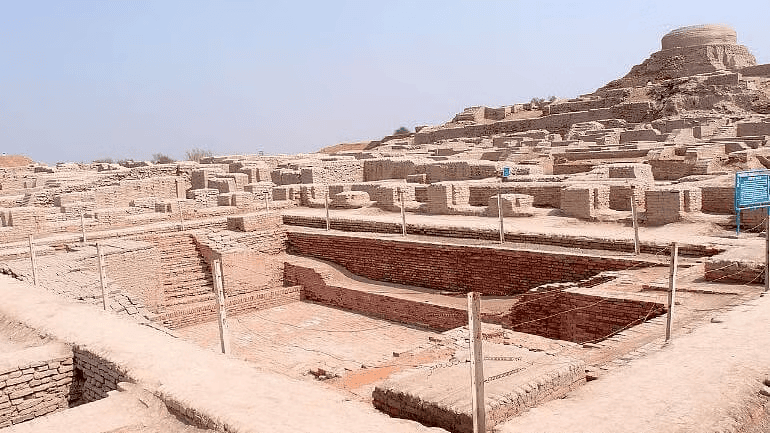 Present Condition of Indus Valley Civilization
Present Condition of Indus Valley Civilization - The presence of elements on the peepal leaf, the willow leaf, the overlapping scales, hatched triangles of patterns, the antelope or ibex (An ibex is a wild goat species known for its long, curved horns ) in panels, and the Amri-Nal Polychrome Pottery suggests a rather close relationship between the Amri Nal and the Harappan styles.
(Amri–Nal culture is attributed to Amri archaeological sites in Sindh and Balochistan provinces of Pakistan.) - The Harappans are believed to have borrowed the idea of cities from the contemporary Sumerians but established cities of their own with superior planning. In south Balochistan, the Kulli female figurines seem to be the earliest, and the Harappans might have learned from them.
- The Harappan population was of four types, viz. Proto-Australoid, Mediterranean, Mongolian, and the Alpine at Mohenjodaro. J. Marshall regards the population of Mohenjodaro as cosmopolitan.
Thus the population was not homogeneous but heterogeneous. This proves that the Harappans were not local people but colonizers.
Date of Indus Valley Civilisation
- Sir John Marshall estimated the length of Mohenjodaro's settlement between 3250 and 2750 B.C. in 1931.
- As a result, as additional sites are uncovered, the date of the Harappan civilization is revised.
- The development of the radiocarbon technique allows for the determination of nearly exact dates.
- Based on radiocarbon dates from his finds, Fairservis reduced the chronology of the Harappan civilization to between 2000 and 1500 B.C. by 1956.
- D.P. Agarwal concluded in 1964 that the overall period of this civilization should be between 2300 and 1750 B.C.
- However, these dates are subject to additional change.
What are the Theories of the Origin of Indus Valley Civilization?
- It is said that the Indus Valley was colonized by the Sumerians and that they introduced their language and script. But we know nothing about the facial features of the Sumerians.
- It is said that the Harappans were Dravidians and that the similarities between the pottery, beads, and necklaces, as also between the marks on the south Indian pottery and the Indus script, point to the Dravidian origin of the Indus Valley Civilisation.
Why can't the Harappan be the authors?
- They spread afterward. Excavation in the South has hitherto revealed no traces of this culture.
- No specimen of Harappan script has been found in the South, where the bulk of the Dravidian people lives.
- We have absolutely no knowledge of the Dravidian language in such an early period. As to this racial type of the ancient Dravidians, we know next to nothing. The modern Dravidians can not be said to be ancestors of the Harappan period.
- The Brahuis, though speaking a Dravidian language, is of Turko-Iranian origin and are ethnically quite distinct from the various peoples speaking Dravidian languages in central and southern India.
- The latest findings suggest that Keezhadi excavations in Tamil Nadu might be an extension of IVC.
- Humped bulls were familiar to both the people of Harappa and Keezhadi.
- Another similarity between Keezhadi and IVC is found in pottery styles.
- The report also suggests that the excavations prove that the construction was similar to IVC's.
- Burnt bricks were used in Keezhadi with standard dimensions across the buildings discovered.
- The dimensions of bricks used in the site are 1:4:6. Similarly, in IVC, only burnt bricks were used and they too came with the standard dimension of 1:2:4.
- The materials used by the people of Keezhadi were also similar to the people of the later IVC period. Agate and carnelian beads which were used by the people of Gujarat and Maharashtra were also unearthed in Keezhadi.
- This modern revelation suggests that people of IVC might have migrated to the south and eastern part of India, which many historians have already opened.
What are the Proofs of Harappan Civilisation as Aryans?
- It is to be noted that the date of the finalization of the canon of the four Vedas is later but the Vedic hymns were composed several centuries earlier. The religions of the Harappan people represent a later phase of the Rig Vedic culture.
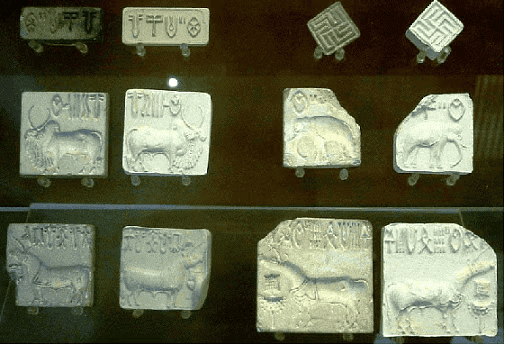 Indus Valley Seals
Indus Valley Seals - The Rig Veda mentions fights in the Indus valley. It may have been that some foreign element wrested the Indus colony for a time from the Vedic Aryans in the post-Vedic period and hence the Grihya Sutra excluded the Sindhu Sauvira.
- Knowledge of writing displayed by the citizens of Mohenjo Daro by their seals shows a later phase than the Rig Vedic age when writing was not known.
- As to the racial type of the Aryans, it is suggested that they were probably a mixture of the Nordics, the Mediterranean, and the Alpines.
- The Vedic people were not ignorant of stone fists, walled cities, stone houses, and brick edifices. The ‘pure’ in the Rig Veda has been interpreted as the fortified cities.
Have a look at Introduction: The Vedic Period to know more about the Vedic Period!
Why Can’t The Vedic Aryans Be Taken to Be Its Author?
- The Vedic Aryans were partly pastoral, partly agricultural people, having no knowledge of the amenities of city life and whose homes were mere structures of bamboo, while the domestic and civic architecture at Mohenjodaro tells quite a different tale.
- The metals used by the Aryans were gold, lead, copper, bronze, and iron coming later. Iron was not there in the Harappan civilization.
- The Aryans wore a helmet and defensive armor, which were unknown to the Harappan.
- The Vedic Aryans were meat-eaters having an aversion to fish, while the latter was an ordinary article of food of the Harappan people.
- The horse was not known to the Harappan. The tiger and elephant were familiar among the Harappans there is no mention of the tiger in Vedas, and the elephant was there but little known.
- The Vedic Aryans revered the cow, while the Harappan people worshipped the bull.
- The entry of the Aryans into India is held subsequent to 1500 B.C., the time when the Harappan culture disappeared.
Indus Valley Civilisation Facts
Indus Valley Civilisation - Location and Size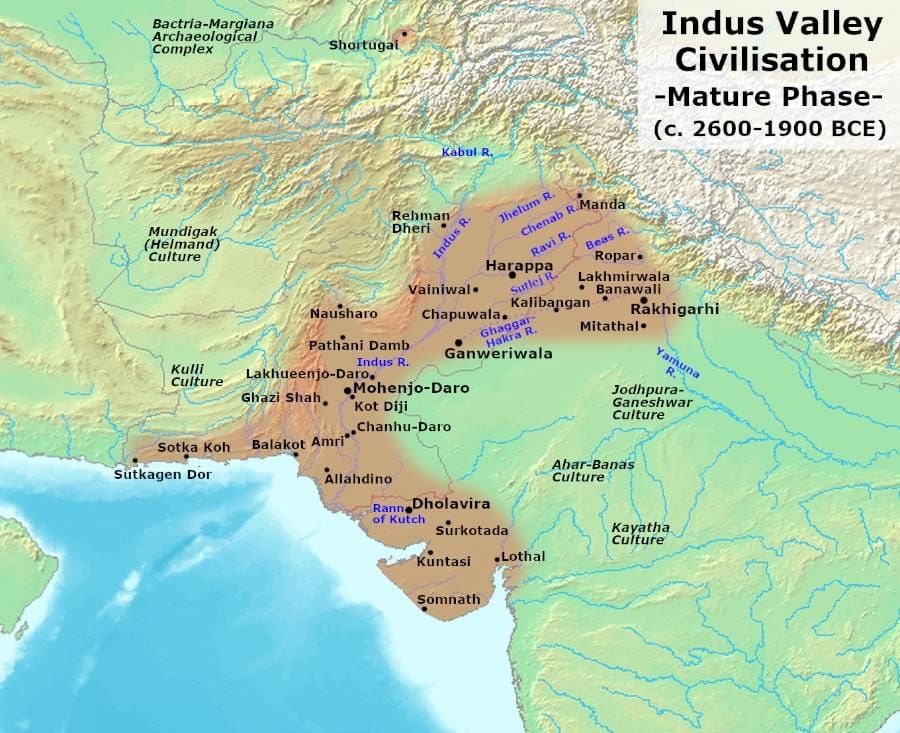
- The Indus Valley Civilization is generally understood to have spanned approximately 1,260,000 square kilometers, covering parts of modern-day Pakistan and northwest India. The extent into Afghanistan is less certain and not widely recognized.
- There have been 1056 towns and communities discovered in the Indus Valley Civilization, with 96 of them having been excavated.
- From the Ghaggar-Hakra Valley in the east to the Makran coast of Balochistan in the west, from Afghanistan in the northeast to Daimabad in Maharashtra in the south, the civilization spread.
- The Indus and Ghaggar-Hakra Rivers, as well as their tributaries, are home to the majority of the villages.
- Harappa, Mohenjodaro, Dholavira, Ganweriwala, and Rakhigarhi are the prominent cities.
Indus Valley Civilisation - Geography
- The Indus Valley Civilization was the biggest of the world's four civilisations (Mesopotamia, Egypt, and China)
- Archaeologists termed the civilisation Indus Valley Civilization since the earliest village was unearthed along the banks of the Indus River.
- However, only about 100 sites have been discovered in the Indus Valley, compared to about 500 along the Ghaggar-Hakra River.
- Most archaeologists favour the term "Indus-Saraswati Civilization" because of the two river systems, but some prefer "Harappan Civilization" since the earliest colony was unearthed in this city (Harappa).
- Some archaeologists believe that the ruins near the Ghaggar-Hakra River have been preserved because they are in an empty desert.
Indus Valley Civilisation - Population
- The Indus Valley Civilization had a population of over 5 million people.
- The majority of the civilization's residents were artisans and traders.
- The majority of the inhabitants of the Indus Valley Civilization lived in settlements, which may have been made of flammable materials such as mud or wood.
- As a result, it's impossible to learn about the lifestyle and culture of these settlements that have vanished without a trace throughout time.
- The Indus Valley Civilization was a highly developed civilization with a well-organized lifestyle.
- Despite their great population, the towns were not chaotic, as they are now in Mesopotamia and Egypt.
- The largest city was Mohenjo-Daro, which covered roughly 300 hectares.
- While estimates vary, the population of Mohenjo-Daro is generally believed to be between 30,000 to 40,000 people. Therefore, this claim is within an acceptable range.
- The Indus Valley Civilization's smallest site was Allahdino.
Indus Valley Civilisation - Town Planning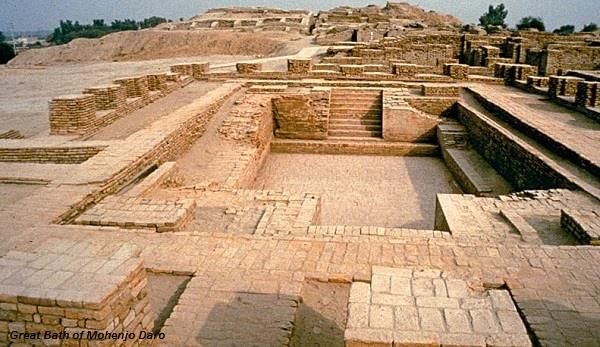
- The Indus Valley Civilization produced the world's first planned towns.
- The civilisation's towns were laid out in grid layouts, with streets intersecting at right angles.
- These urban planning miracles predate Hippodamus of Miletus, known as the "Father of European Urban Planning."
- The layout of many Indus Valley cities, including Harappa and Mohenjo-Daro, is indeed known for its grid-like pattern, reflecting advanced urban planning.
- The main streets ran north to south, while the lesser streets ran east to west.
- The streets came together at a straight angle.
- Religious or astrological beliefs are said to be responsible for this specific pattern.
- Harappan cities and towns were uniform in addition to being well-planned and having great drainage systems.
- Almost every excavation site appears to have a similar structure and design.
- The streets of Mohenjo-Daro and Harappa were up to 10.5 metres wide.
- The roadways were at least 1.5 metres wide.
- Archaeologists say the broad streets also allude to market operations.
- Burnt bricks were used to pave Harappan roadways to make it easier for ox carts to travel about.
- The towns of the Indus Valley Civilization featured drainage water canals running alongside the streets.
- Indus Valley Civilization towns might be separated into various neighbourhoods.
- Each neighbourhood contained residents who worked in a certain vocation.
Indus Valley Civilisation - Drainage System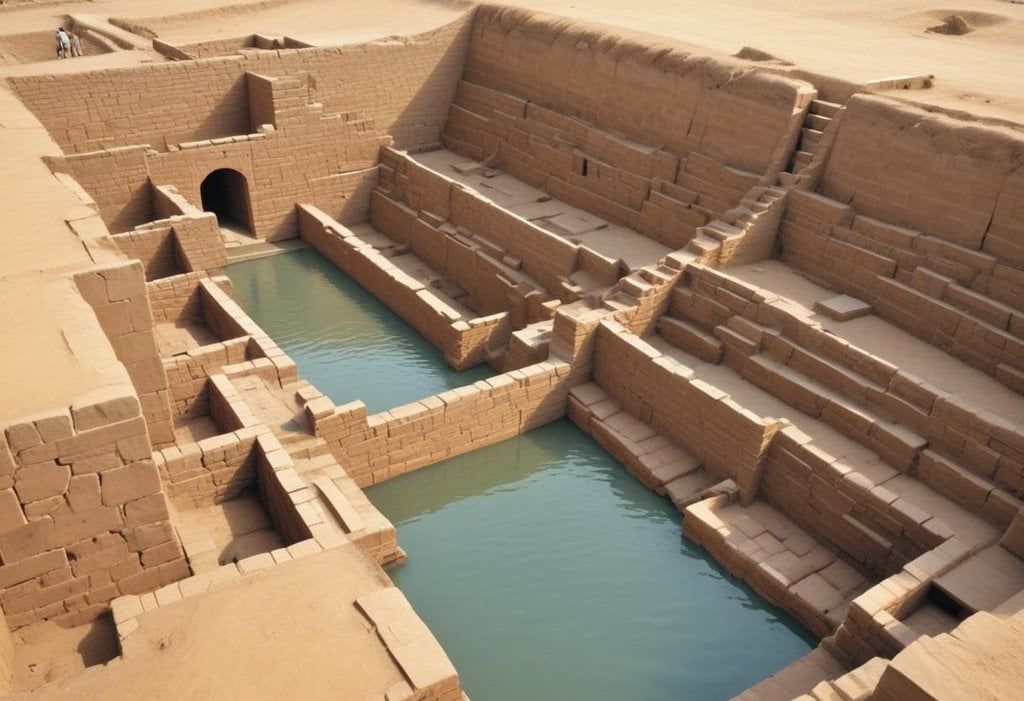
- They had sophisticated sanitation systems in place.
- Before any other ancient civilisation, the people of the Indus Valley Civilization understood about and practised water channelling and wastewater disposal.
- Aqueducts were built by the Romans thousands of years later.
- Their water management system was so advanced that they had separate wastewater and stormwater canals along Harappan roadways (rainwater).
- The wastewater drains were subterranean and had clay covers that opened for cleaning.
Indus Valley Civilisation - Economic Facts
- Agriculture is the foundation of the Indus Valley civilization. During this time, trade and commerce flourished.
- In the Middle Bronze Age, Mesopotamian (Sumerian) scribes regularly mention a location called Meluhha. Meluhha was a significant Sumerian commerce partner, importing large quantities of wood and ebony.
- Meluhha, which was most likely the Indus Valley Civilization, also imported sesame oil and luxury commodities like lapis lazuli.
- At Lothal, a dockyard has been discovered.
- Exports and imports were made.
- Cotton was produced, and the unit of measurement was 16.
- Harappan civilization had weights and measures, which were visible at Lothal.
- The weights were generally cubical in form and constructed of limestone, steatite, and other minerals.
Indus Valley Civilisation - Trade
- Cotton was discovered here for the first time in history. Cotton was first used in the sixth millennium B.C., according to evidence discovered at Mehrgarh.
- Cotton was initially spun and woven by farmers in the Indus Valley.
- Cotton was another material that was exported.
- Many port cities have been discovered, demonstrating the presence of extensive marine trading contacts with various civilisations.
- Lothal has the potential to be the world's first dockyard.
- Allahdino, Suktagendor, and Balakot are among the other ports.
Indus Valley Civilisation - Social Life
- There is a lot of data to understand Harappan social life. Both men and women wore two pieces of cloth, one for their upper and lower bodies.
- Beads were worn by both men and women.
- Bangles, bracelets, fillets, girdles, anklets, ear-rings, and finger rings were among the accessories used by women.
- These ornaments were made out of gold, silver, copper, bronze, and semi-precious stones.
- Cosmetics were widely used. Several household goods made of pottery, stone, shells, ivory, and metal were unearthed in Mohenjodaro.
- Spindles, needles, combs, fish hooks, and knives are all made of copper.
- Fishing, as well as bullfighting and hunting, were popular pastimes.
- Copper and bronze axes, spearheads, daggers, bows, and arrows were among the various weaponry on show.
- Only a few written artefacts have been discovered in the Indus valley, and experts have failed to interpret the Indus script.
- As a result, defining the state and institutions of the Indus Valley Civilization is difficult.
- Temples have yet to be uncovered at any Harappan site. As a result, the possibility of priests ruling Harappa has vanished.
- A merchant class most likely controlled Harappa.
- When seeking for a power centre or depictions of prominent individuals, archaeological texts may not provide easy answers.
- According to some researchers, Harappan civilization had no rulers and everyone was treated equally.
Indus Valley Civilisation - Religion and Worship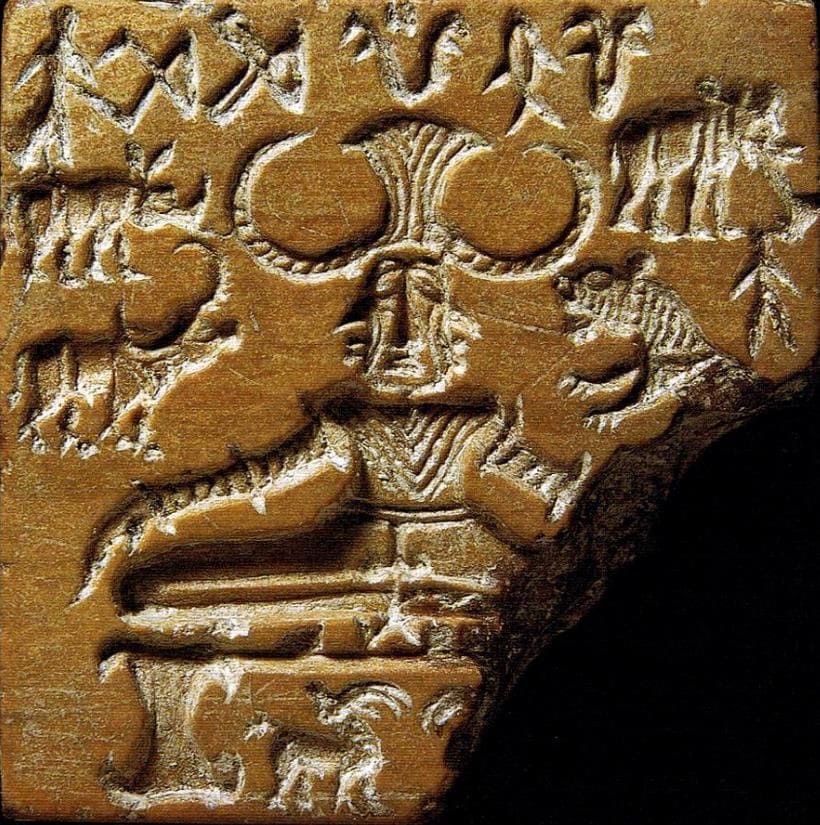
- Harappa has several female clay sculptures. In one illustration, a plant emerges from the womb of a woman.
- As a result, the Harappans venerated the soil as a fertility goddess in the same manner that the Egyptians adored the Nile goddess Isis.
- The male god is depicted as a seal with three horned heads reclining in a yogi stance.
- This god stands on a throne flanked by elephants, tigers, rhinoceros, and buffalo.
- At his feet, two deer emerge. Pushupati Mahadeva is the divine being portrayed.
- Several female sex organ symbols and stone phallus symbols have been unearthed.
- The Indus people regarded trees and animals as sacred.
- The inhabitants of the Indus Valley Civilisation worshipped animals such as unicorns and oxen.
Indus Valley Civilisation - Oldest SignBoard
- In 1999, a board with about 30 cm high stone symbols/letters in a wooden frame was unearthed in Dholavira.
- According to archaeologists, this was the world's first signboard.
- It is likely to have been set on the façade of the citadel's northern entrance.
Indus Valley Civilisation - Hygiene and Cleanliness
- The people of the Indus Valley Civilization lived in an extremely clean, healthy environment.
- The significance of cleanliness in Harappan society is evidenced by the enormous number of public baths, the superb water management system, flowing water in every dwelling, clean drainage systems, and subterranean wastewater systems.
- In terms of civic sensibility, the Indus Valley Civilization was considerably ahead of its time even back then.
- In Mohenjo-Daro, there were dustbins put along the streets!
- These were waste disposal containers made of bricks.
- The Great Bath is specifically associated with Mohenjo-Daro. While other sites had advanced water management systems
Indus Valley Civilisation - Burial Methods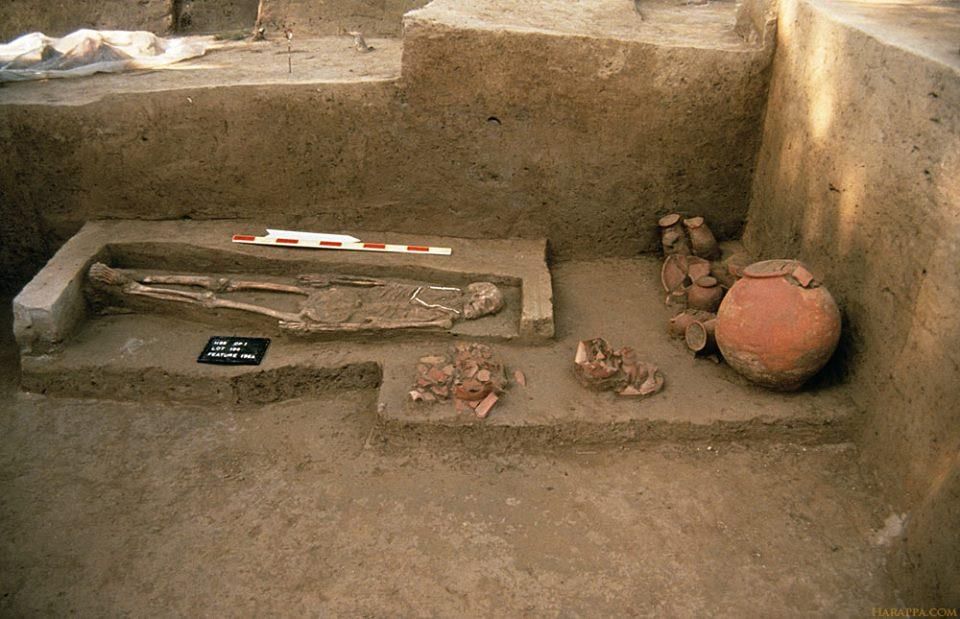
- Cemeteries discovered at Mohenjodaro, Harappa, Kalibangan, Lothal, and Rupar revealed details on the Harappans' burial practices.
- Both full burial and post-cremation burial were common at Mohenjodaro.
- Coffins were employed since the burial pit at Lothal was lined with burnt bricks. Wooden coffins were also unearthed at Harappa.
- In Lothal, pot burials have been unearthed, sometimes with pairs of bones. There is, however, no substantial evidence that Sati is practised.
Indus Valley Civilisation - Art
- A great variety of toys, including dice, whistles, and marbles, were uncovered when the towns of Harappa and Mohenjo-Daro were originally discovered.
- As a result, archaeologists believe that the bulk of the people who lived in those towns were children.
- Toys and games have been discovered on archaeological sites such as Mohenjo-Daro.
- They've discovered cubical dice with one to six holes (quite like the ones we have today)
- Other toys include bullock cart clay figurines, spinning tops, marbles, tiny pots and utensils, and so forth.
- During the Indus Valley era, art and craft were extremely advanced.
- Their items show a high level of accomplishment in terms of aesthetic value and skill.
- Terracotta, bronze, copper, and other metals are among their offerings.
- They were also bead-making specialists.
- This is a significant find because it demonstrates the Indus Valley civilisation's proficiency in metal bending and casting. It also represents the value of dancing as a source of entertainment during the period.
- These magnificent works of art, created using the lost-wax casting method, predate the Greeks by thousands of years.
Indus Valley Civilisation - Architecture
- Harappa's granaries featured high technology that was witnessed 2800 years later in Rome.
- Harappa has six granaries in two rows.
- It was constructed on a high platform to avoid flooding.
- The Granary was roughly 45 metres in length and 15 metres in width.
- There were additional citadels, bathing platforms, and burial areas on the locations.
- 16 water reservoirs have been discovered in the Harappan city of Dholavira.
- These reservoirs safeguard the city from flooding while also ensuring water supply throughout the year, including during the dry season.
- They constructed dams to regulate water flow and store it in massive reservoirs.
- Public structures were built with the larger bricks.
- Houses were constructed using the smaller bricks.
- Harappa had two and three-story dwellings because of its excellent design and brickwork.
- These large homes included centre courtyards as well as flat terraces that were easily accessible.
- There were no windows facing the major streets of the Indus Valley.
- There was just one door in each dwelling.
- The residences' windows and doors would all open onto the centre courtyard.
- As a result, they were carefully constructed to minimise noise and dust.
- Houses with adjoining restrooms were maybe the first in the world in the Indus Valley culture.
- They had access to running water as well.
- There were also restrooms with modern drainage systems.
- The Harappan civilisation featured rainwater storage devices.
- They have sophisticated and effective water management systems in place.
- The Great Bath, the world's largest public water tank, was discovered here.
- Mohenjo-Daro also had a significant water management system, with over 700 wells and 80 public toilets.
- The wells were deliberately situated to provide water to all of the communities.
Indus Valley Civilisation - Seals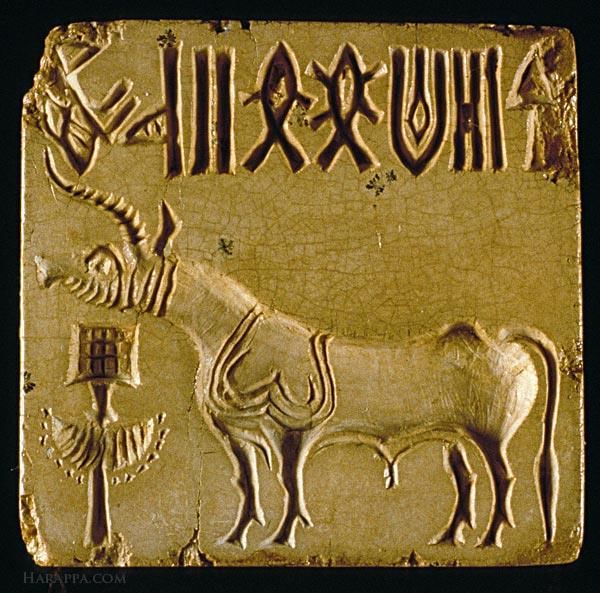
- Steatite was used to make the majority of the seals.
- Gold, ivory, agate, terracotta, chert, and faience were also used to make some of the seals.
- The Harappan seals were square in design, measuring 2X2.
- The majority of seals were utilised for business purposes. A few seals were also worn as amulets, maybe as identification cards.
- All of the seals have animal illustrations with something written in pictographic script on them (which is yet to be deciphered).
- Tigers, elephants, bulls, bison, goats, and other animals are prominently featured.
- Some seals contain mathematical images on them, indicating that they were probably utilised for educational reasons.
- Both sides of the seals have writing on them. The manuscripts are written in the Kharosthi style (right to left).
- The Pashupati Seal of the Harappan Civilisation from Mohenjo Daro is the most renowned.
- It depicts a seal with a human reclining cross-legged in the centre surrounded by animals: an elephant and a tiger to the figure's right, and a rhino and a buffalo to the figure's left.
Indus Valley Civilisation - Measurements
- The ruins of this civilization have been discovered with stone cubes. Archaeologists think they were weighed in order to be measured.
- These weights rise in a 5:2:1 ratio. They were 0.05, 0.1, 0.2, 0.5, 1, 2, 5, 10, 20, 50, 100, 200, and 500 units in weight.
- They differ from the Egyptian and Mesopotamian measurement systems of the period, implying that this system was devised independently.
- The smallest division on an ivory scale found in Lothal, Gujarat was roughly 1.704 mm. This is the smallest Bronze Age division yet discovered.
Indus Valley Civilisation - Metallurgy
- They made lead, copper, bronze, and tin items, among other metals.
- These items were exported.
- They understood how to smelt copper with other metals.
- At Lothal, gold necklaces with a diameter of less than 0.25 mm have been discovered. Mohenjo-Daro, Harappa, and Rangpur have all discovered metal objects.
- Casting was used to create Harappan copper objects.
- Bronze vessels were typically cast using molds rather than being hammered from a single sheet, reflecting the advanced metallurgical techniques of the Indus Valley Civilization.
- The Indus Valley Civilization has advanced metal alloying technologies.
- In Banawali, Haryana, a touchstone was discovered.
- This touchstone has gold streaks in it, indicating that it was most likely used to test gold purity.
- This method is still employed in various regions of the country.
Other Important Facts
- Around 7000 B.C., the earliest Indus Valley settlement was created.
- The earliest known village is Mehrgarh, which dates back to roughly 7000 B.C.
- More than 4000 seals have been discovered at the locations. Small rectangular stone slabs with inscriptions serve as seals.
- On them are also representations of animals and other figures.
- Mohenjo-Daro has been rebuilt at least nine times. Many of this civilization's towns were repeatedly devastated by floods, silt deposition, and other natural disasters.
- They were reconstructed each time.
- Dentists were even present in the Indus Valley Civilization. The first evidence of drilling human teeth in a living individual was discovered in Mehrgarh, Pakistan, in 2006.
- The Indus Valley Script is yet to be deciphered. The fact that their script has yet to be decoded is one of the reasons we know so little about them.
- Objects with almost 400 distinct symbols have been identified.
- There is no representation of any king or ruler. Despite having an organised way of life, the Harappan civilization had no picture or indication of a monarch or governmental structure.
- There is no evidence of warfare. There is little trace of fighting from the Indus Valley Civilization, despite the discovery of weaponry such as spears, knives, and arrowheads.
- It was found that they were peaceful people in general.
Indus Valley Civilisation - Decline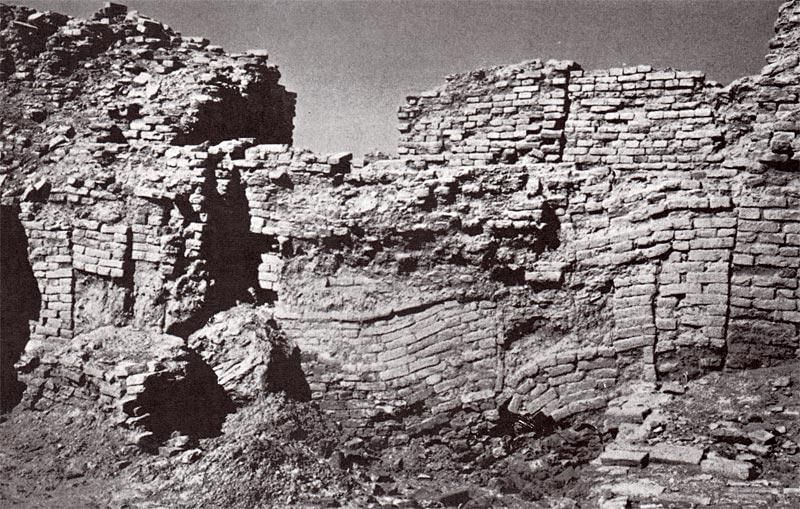
- Historians are unsure what caused the Indus Valley Civilization to fall apart.
- Experts are now certain that their collapse was not caused by invasion, sickness, or any other disaster.
- The decline of the Indus Valley Civilization is believed to be due to a combination of factors, including climate change, river course changes, and possibly over-exploitation of resources.
- The progressive drying up of the Saraswati River is said to have caused this.
- The civilization did not disappear abruptly, but gradually fell and was integrated into different cultures.
FAQs on the Origin of Indus Valley Civilization
Q1. Who discovered Indus Valley Civilization?
In the 1920s, the Archaeological Department of India carried out excavations in the Indus valley wherein the ruins of the two old cities, viz. Mohenjodaro and Harappa were unearthed. In 1924, John Marshall, Director-General of the ASI, announced the discovery of a new civilization in the Indus valley to the world.
Q2.. Who discovered Harappa and Mohenjo Daro?
Mohenjo-Daro was discovered in 1922 by R. D. Banerji, an officer of the Archaeological Survey of India, two years after major excavations had begun at Harappa, some 590 km to the north. Large-scale excavations were carried out at the site under the direction of John Marshall, K. N.
|
365 videos|701 docs|149 tests
|






















